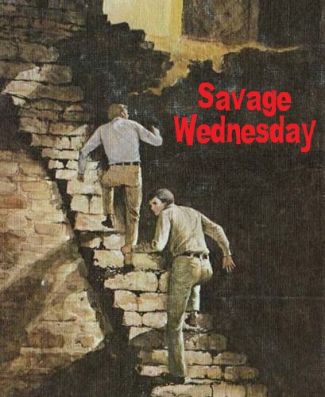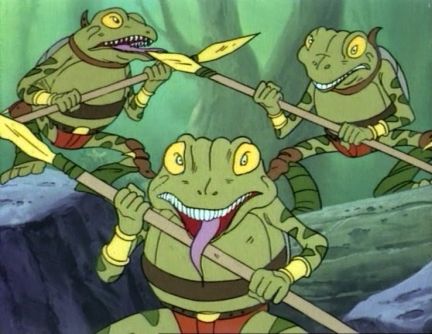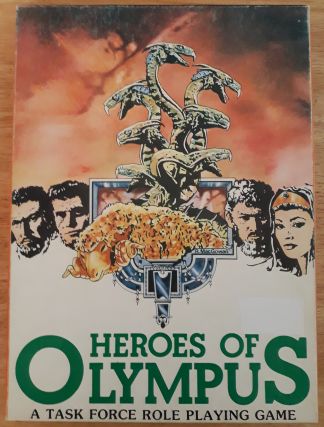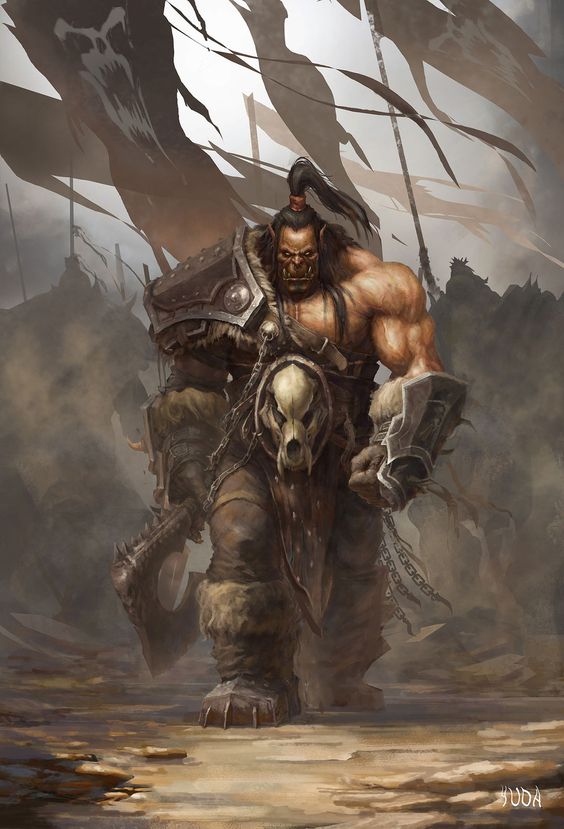Savage Wednesday: Kids vs. Bullywug

When I last posted about our The Kids’ Game campaign using Savage Worlds Deluxe Edition, I explained how fantasy heroes Foxglove, Dark Halo, and Haldir aren’t really Foxglove, Dark Halo, and Haldir. They’re really rather ordinary middle school students from Miami, Florida, who have found themselves thrust into a strange fantasy world in which they become heroic members of the Guard.
In our two most recent sessions, the kids returned to Miami, arriving at the school playground just a few hours after they were transported to the fantasic world of Aysle. There they met Carlos (played by guest star Alex). The kids evaded the police, who were looking for the allegedly missing children. Bit by bit, the kids pieced together what had happened since the strange attack on Old Man Sutherland’s home.
According to the news, Sutherland was in the hospital in serious but stable condition. He was being watched by the police, and was accused of being some sort of money launderer for a drug cartel. The attack on his home was perpetrated by drug dealers. The children were wanted for questioning as witnesses. The children also heard about a homeless man killed in a state beach park. Supposedly he’d been killed by an alligator, but the children recognized his picture: He was the spitting image of the corrupt constable from Aysle.
During the two sessions over which events played out, Mario outsmarted a police detective during an interrogation as Mario’s house. Mario also deduced that the detective knew details about the attack on Sutherland’s home that only someone who was there would know. The other kids, with the help of Carlos’s mother, determined that some sort of frog-spirit was responsible for the homeless man’s death.
The kids went to the park, meeting up with Carlos’s uncle and his motorcycle gang. The kids partied a bit, and Ganke decided he really wanted to be a biker. The kids also found the stone tip from a crude spear, which, thanks to strange “bleed over” from their Aysle personae, they recognized as belonging to a bullywug hunter.
Somehow a monster from Aysle got sucked into Miami’s reality when the children returned.
The kids returned to the park at night. They did battle with a pack of killer frogs, and then hopped on their bikes and pedalled like crazy when the bullywug hunter and more killer frogs showed up. In the high speed chase-slash-fight, the kids defeated the frogs and killed the bullywug.
The session ended with the kids studying Sutherland’s home-made rulebook more closely. They learned that there are several different realms. In each realm, evil forces seek dominance with the ultimate goal of gaining sufficient power to invade Earth by means of interdimensional bridges. The key to these bridges? Something called the Possibility Chalice. The next clue to the Chalice’s location seems to be in the two-fisted, pulp realm of the Nile Empire.
And so the kids sat down to make up new characters in order to jump to a new universe.

Bullywug Hunter (Wild Card)
Attributes: Agility d8, Smarts d4, Spirit d6, Strength d6, Vigor d6
Skills: Climbing d6, Fighting d6, Stealth d6, Throwing d6
Pace: 6
Parry: 5
Toughness: 5
Special Abilities:
Javelin: STR + d6.
Amphibious: Breathe air and water. Pace 8 in water.
Frog Commander: May share Bennies with amphibians under its command.
Jump: Leap 1d6″ to gain +2 to attack and damage.
I’m back to selling a few gaming items via ebay. If you’re interested, check these out, and maybe even put in a bid.

Heroes of Olympus: A Task Force Role Playing Game was published as a boxed set in 1981. Conceived and written by B. Dennis “Chariot of” Sustare, this unusual game combines fantasy roleplaying in mythical Greece with squad level wargaming action. This game was (at least) almost unique among roleplaying games of the time.
I wrote Path of Legend for the Dawnforge: Crucible of Legend campaign setting published by Fantasy Flight Games using the d20 System. This adventure was designed to introduce players to Dawnforge. According to the front cover, it is a “Legendary Quest in the World of Dawnforge”. According to the back cover, “The adventure leads new heroes from 1st to 5th level, and also offers them the chance to earn their first legend point. The adventure provides a compelling mix of location and event-based encounters, and rewards roleplaying and puzzle-solving as well as combat.”

